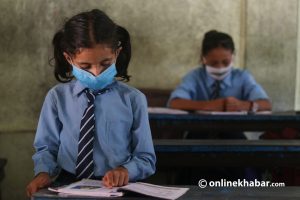Nobody knew that Covid-19 would bring educational chaos to a large extent which will lead higher education to digitally migrate in an unprecedented way. With a limited skill set of teachers to cope with emergency remote teaching (or ERT), and limited infrastructure to carry out remote teaching in developing countries, higher education institutions in these regions transitioned to remote teaching from face-to-face mode. This article captures the concerns of emergency remote teaching during Covid-19 in higher education based on an empirical study carried out in Nepal and Bangladesh.
Developing countries often face emergency situations in education owing to several reasons, such as political unrest, natural calamity, epidemic or pandemic and war. We agree with Charles Hodges and his colleagues that emergency remote teaching can be a good skill set for future teachers of higher education to manage the educational crisis confidently.
If teachers are oriented on emergency remote teaching during their appointment or this skill set is built during the early in-service period, they will be able to tackle any kind of disruptions in education that emerge in future easily. Our study has revealed that there are certain aspects of emergency remote teaching, delineated below, that teachers need to consider while adopting emergency remote teaching during crisis contexts.
Mediating artefacts

Our study unfolds that teachers mostly use social media platforms, popularly Messenger, during the emergency remote teaching in Nepal and Bangladesh. This is partly because there are no institutionally owned learning management systems in many institutions. It is intriguing to observe that teachers set up the rules to use these social learning spaces for educational purposes, such as these platforms will only be used to share academic stuff but not to have an informal or casual talk.
This contextual adaptation of social learning tools by perceiving a very distinct action potential of such a tool is something worth noticing. It also strongly suggests that the universities should select such tools in the future that have social learning spaces in them or the selected tools should have the potential to embed social learning platforms.
Deeply, it also reflects our culture of communal living and the way we would love to socialise to a greater extent compared to the western world. Therefore, it seems that the selection of learning management platforms that have social learning spaces in higher education can turn out to be effective if we plan to use technology in higher education in South Asian contexts.
Another intriguing result of this study is the plan of both the teachers and students to use online resources after Covid-19. Only 55 per cent of teachers have used online resources significantly before the Covid-19, but 74 per cent of teachers have stated that they have a plan to use technology in their classrooms after Covid-19. It is, of course, because they knew the significance of technology to manage crisis contexts and also, they received some training to manage digital technologies during this never-to-expect pandemic.
Similar results are found with students too. Only 41 per cent used online technologies significantly before Covid-19; nonetheless, this ratio has gone up to 60 per cent when we examine the students who plan to use online resources after the pandemic. This also indicates which path higher education is moving to in the future and the kind of preparation required in higher education to tap the trend of blended learning, flipped classrooms and online education.
Constraints in online teaching and learning

Peggy A Ertmer, an American professor, classifies barriers to using technology in education as the first order (external to teachers, such as lack of infrastructure, limited bandwidth etc) and second-order barriers (internal to teachers as low self-confidence, their attitude in technology use and so on). The findings of our study indicate that teachers of English as a foreign language in higher education face many challenges in running online classes that include poor network, a lack of their own competencies to manage technology, a lack of technological support from institutions, low student attendance and motivation, a lack of learners’ interaction, power cut and difficulty in learners’ assessment.
The teachers reported that students are passive in online classes, and at times, it is very hard for them to make their students understand the contents. Besides the first-order and second-order barriers, our study has also identified system-level barriers such as the difficulty in learners’ assessment as identified by Anja Balanskat and her colleagues. It suggests that whether it is in emergency remote teaching or in a normal setting if we plan to use technology in higher education, we need to be aware of all these three kinds of challenges and plan for the technology use.
Students of higher education in this study also reported that they are facing several challenges while joining online classes, such as poor and unstable internet, power cut, a lack of devices to work on, inability to pay attention to the content because of getting distracted by the social media, not being accustomed to working in the online environment, expensive data package and the fear of online examinations.
Having identified these challenges, both teachers and students can focus on effective strategies to cope with these issues which can emerge while getting involved in future crisis contexts. At the same time, the higher education course designer and policymakers can plan their course and policies to tackle these challenges and use digital technologies in a way that can help achieve learning outcomes
Mental wellbeing

As claimed by Professor Laxman Gnawali, mental wellbeing in an educational context is still an emerging issue in Nepal. It equally needs to be in the academic discourses in higher educational contexts. Our study shows that on the one hand, students got less support from the institutions during the emergency remote teaching, which directly impacted their mental wellbeing. Students from the rural parts of Nepal had anxiety associated with online education as they could not complete the given tasks comfortably. At times, they had to walk for two hours to reach the place where they could have access to the internet. This situation can be completely frustrating for anyone. Many Bangladeshi students felt depressed during the emergency remote teaching.
On the teachers’ side, the lack of decent incentives to the teachers or uncertainty of incentives to be provided to the teachers during the pandemic also affected their mental health. This study found that the issue of the salary of the teachers teaching in community colleges during the pandemic was really a problem.
One of the teachers of Nepal also reported that he arranged guest lectures for his course, but he had no idea if those guest lectures would be provided with some incentives. Therefore, there were many uncertainties that were looming in teaching and learning during the pandemic and they were implicitly or explicitly affecting the mental wellbeing of the teachers.
The participants also indicated that basic training in managing online resources, training to boost students’ morale during the pandemic, training for teachers on how to assist students psychologically, counselling classes and workshops with experts in psychology can be useful to help students and teachers psychologically.
Both teachers and students maintained online classes were too mechanical and lacked opportunities for sharing; therefore, they also felt detached from their colleagues and friends. During the interview, almost all the students stated they would prefer face-to-face classes to online classes.
Nevertheless, there are also positives of online classes the participants have pointed out. They do not need to commute to the institutions for teaching and learning, and they can have more time with family, for study and for lesson planning. Some research participants also reported that the pandemic became an opportunity to be technologically competent; in that case, they have treated the pandemic as a blessing in disguise.
(This article is based on the full open-access article titled ‘Preparations for and practices of online education during the Covid-19 pandemic: A study of Bangladesh and Nepal‘ published in Education and Information Technologies on July 28, 2021.)
























